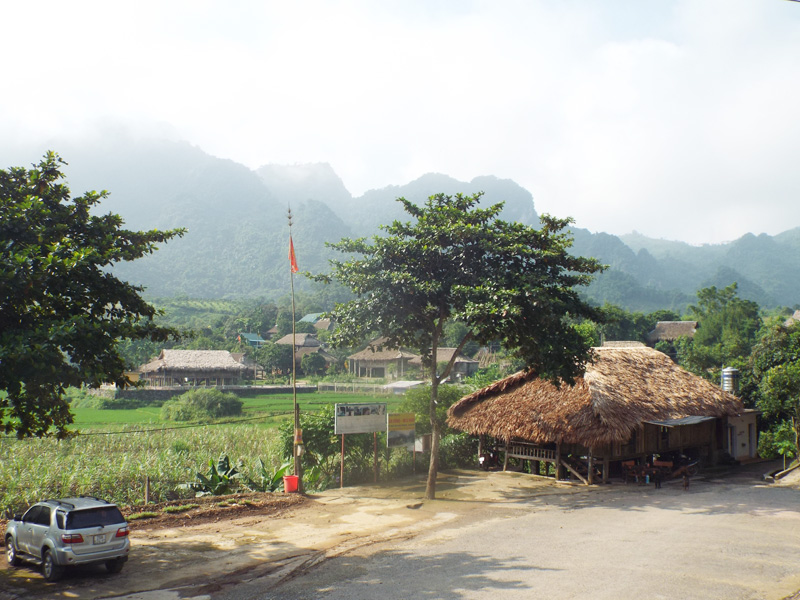



A corner of the Muong ethnic village of Giang
Mo
Giang Mo hamlet is the home to more than one
hundred households, all of Muong ethnic people who still retain unique identity
from building houses, ways, dressing, living styles in the production. The
ancient stilt houses of the Muong ethnic people gather together to express the
cohesion of the community. The houses were set up on the large land, leaning
back on the hill, around the stream murmured day and night. Although life is
difficult but the Muong ethnic people are extremely hospitable, just setting foot
to visit, choosing any house as a stop, visitors are treated warmly with love
affection, warmth of local poeple.
The people in the hamlet are always willing
to treat visitors the products of mountainous forests such as nếp nương
sticky rice, cẩm sticky rice, pork filled with leaves, buffalo meat with lồm
leaves, forest chicken, bitter bamboo shoots, steamed stream fish, Can wine,
banana wine. Giang Mo hamlet still keeps and preserves the intact cultural
traditions, characteristic of the ethnic identity. Young men go to the upland
field, women do gardening, housework to improve the family. Muong ethnic women
are very good at woven, weaving embroidery so they often make hand-made
traditional handicraft products such as bamboo and rattan weaving to introduce
to tourists. Meanwhile, the men with many talents, know how to play the flute,
, fishing, shrimp catching, are very gentle, honest, open, easy to approach,
easy to love, always create friendly atmosphere. They will support you with new
experiences when exploring the village, mountains, streams, picking fruit,
which really brings the joy after the worries in urban life.
Giang Mo Hamlet has a lot of local products,
such as banana, grapefruit, forest bamboo shoots, orchid, taro, precious
medicinal plants, honeycomb, chickens, pigs. Buying souvenirs for relatives or
keeping as souvenirs is also very interesting. Also on the journey to Muong
Giang Mo Hamlet, you can visit places such as Cu Chinh Lan Heroes Monument,
Muong Cultural Space Museum, Muong Cultural Heritage Museum, to Thung Nai Port
for exploring and experiencing the tourist on the romantic Hoa Binh Lake.